Death of Wolf Inspires Hero; Dedicates His Life to Protect Snow Leopards, Gazelles
Karma Sonam, a field manager with the Nature Conservation Foundation, received the Natwest Group Earth Heroes Inspire Award 2021 for his outstanding work in reducing human-wildlife conflict in 17 communities across eastern Ladakh and conservation of snow leopards and Himalayan wolves.
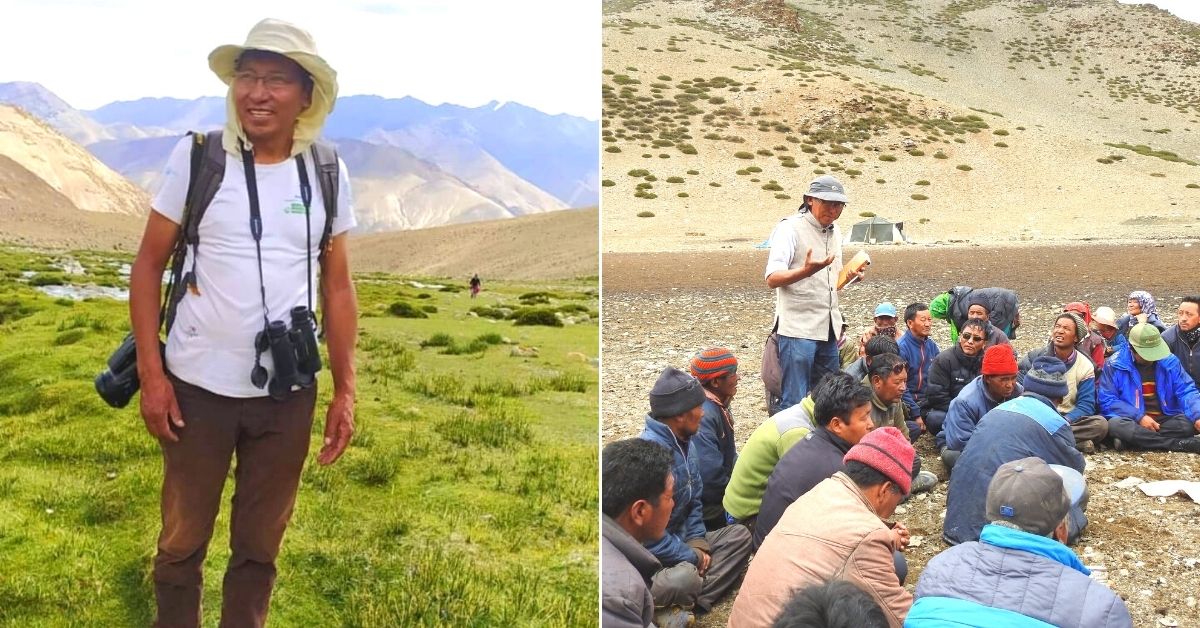
Earlier this week, 56-year-old Karma Sonam, a field manager with the Nature Conservation Foundation (NCF) in Ladakh, received the Natwest Group Earth Heroes Inspire Award 2021. Karma received the award for his outstanding work in reducing human-wildlife conflict in 17 communities across eastern Ladakh and creating awareness about the importance of environmental protection. Working in close coordination with agro pastoralist communities, he has helped protect endangered wildlife species like the elusive snow leopard, Himalayan wolf, Tibetan gazelle, bharal (blue sheep) and the Tibetan argali, among others.
His focus, however, has largely been on the snow leopard and the Himalayan wolf. Leveraging a system of community-based conservation, he has helped implement fascinating initiatives like self-sustaining insurance schemes for pastoralists who lose their livestock to predators, creation of grazing-free reserves for herbivores like the Tibetan gazelle that are prey for snow leopards and converting Shandongs (traditional wolf traps) into holy Buddhist sites.
Khenrab Phuntsog, a wildlife guard with the Wildlife Protection Department in Leh district, talks about why Karma deserves this recognition.
“There is no doubt that Kaga (elder brother in Ladakhi) Karma deserves this award for the effort and dedication he has put into wildlife conservation in Ladakh for the last 15 years. He has the ability of establishing close relationships with different communities and convincing them to work for wildlife conservation. For decades our pastoralists have had a difficult relationship with predators like snow leopards and wolves who prey on their livestock. Take the example of his work converting Shangdongs (wolf traps) into stupas (or chortens which are mound-like shrines). It’s an ingenious way of ensuring no one from their community kills another wolf in it given how genuinely these people take their Buddhist faith,” says Khenrab.
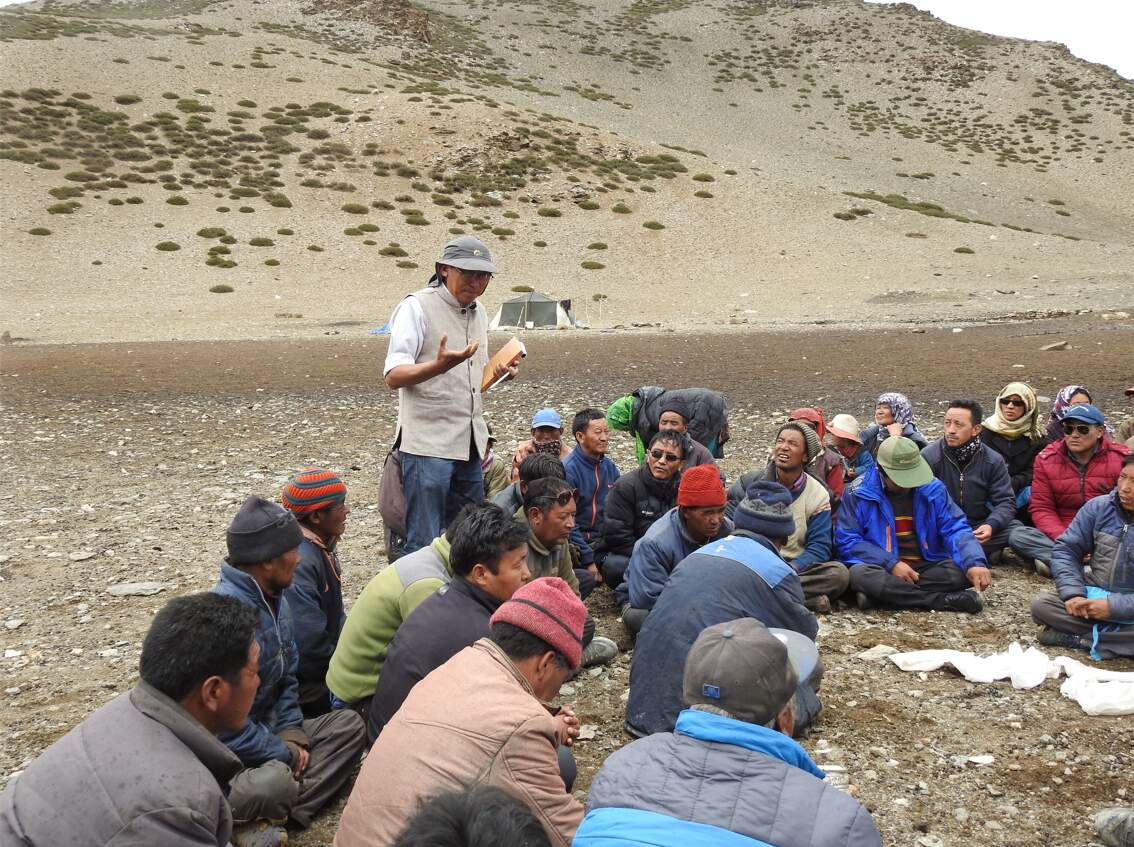
Violence Before Repentance
Born and raised in Rumste, a hamlet that lies about 78 km from Leh and forms a part of the larger Gya village, Karma grew up in a family of agro-pastoralists.
“As a child, I would climb up on horses along with my uncles to the pastures above our hamlet and collect manure from our livestock grazing there. At the time, my family had about 250 animals as part of our livestock. All our earnings were dependent on them. On one such sortie with my father as a 10-year-old, I remember heading to a pasture land about 7 km from our hamlet, where we came across a Shangdong or traditional wolf trap and a crowd of herders that had gathered around it. A Shangdong is a conical stone structure, where a live bait like sheep or goat is kept to lure a wolf inside. Once inside the protruding walls of this particular structure, which slants upwards, the wolf cannot get out and remains trapped,” says Karma.
When Karma and his father got up to the Shangdong uphill, they saw a small black-coated wolf trapped inside and the group of herders stoning it. “My father and I joined in to stone the trapped wolf until it died. At the time, we knew little of conservation, and were mindlessly reacting to the danger it posed to our livestock. It was only much later in life that I realised the sin that was being committed here. For the past 15 years, I’ve spent time atoning for it by working with these same communities to protect these wolves,” he adds.

Finding His Way to Atonement
“In 2006, we started a community-based insurance scheme to help local pastoralists make up for some of the losses they suffer when their livestock gets eaten by predators. In Ladakh, we started this scheme in the village of Gya,” notes Karma. It’s imperative to note that the NCF had started this livestock insurance scheme in the Spiti Trans-Himalaya region back in 2002.
As the NCF notes: “In the Spiti Trans-Himalaya, our ecological research had established that intensive livestock grazing had out-competed wild herbivores from the rangelands, and this in turn had presumably intensified the levels of livestock predation by the snow leopard (Panthera uncia) and the wolf (Canis lupus). We studied this human-wildlife conflict in detail, and found that the consequent economic losses suffered by people were considerable, and their resentment occasionally led to persecution of these endangered carnivores. In 2002, as part of their larger conservation programme, the NCF set up a livestock insurance program in Kibber Village in the Spiti region of Himachal Pradesh that was designed to share and offset the economic losses that local people were facing due to livestock predation by wild carnivores.”
So, how does this insurance scheme work in Ladakh? Village residents first appoint a committee of three to six executive members. The committee’s job is to determine how to set the monthly premium each household has to pay and how they collect that amount. Take the example of Gya village, where NCF started their scheme in Ladakh in 2006.
“In Gya, residents and the village committee chose the horse as the most important part of their livestock on which they would pay an insurance premium. Residents felt this was a very useful animal for ploughing on the field, collecting manure from grazing fields and transport, although they’re less used today given the arrival of pickup trucks and SUVs. Losing horses to predators like wolves and snow leopards was causing extensive financial loss for residents,” says Karma.
The committee initially set a premium of Rs 25 per month per horse. At the community level, they insured more than 100 horses, which members of the executive committee would collect from residents. If a resident lost their horse to a snow leopard or wolf, the concerned person would get Rs 7,000 as compensation, an amount set by the committee. Over the course of a year, if the committee collected a corpus of say Rs 50,000 from all the premiums paid by residents, the NCF would add a further Rs 60,000 to create a total corpus of over Rs 1 lakh.
This amount is deposited in a joint bank account of two executive members, who keep a detailed account of how many horses were lost in a given year, how much compensation each resident received, etc. For the first five years, NCF contributes about 60% of the total corpus with the other 40% coming from the premiums residents are paying.
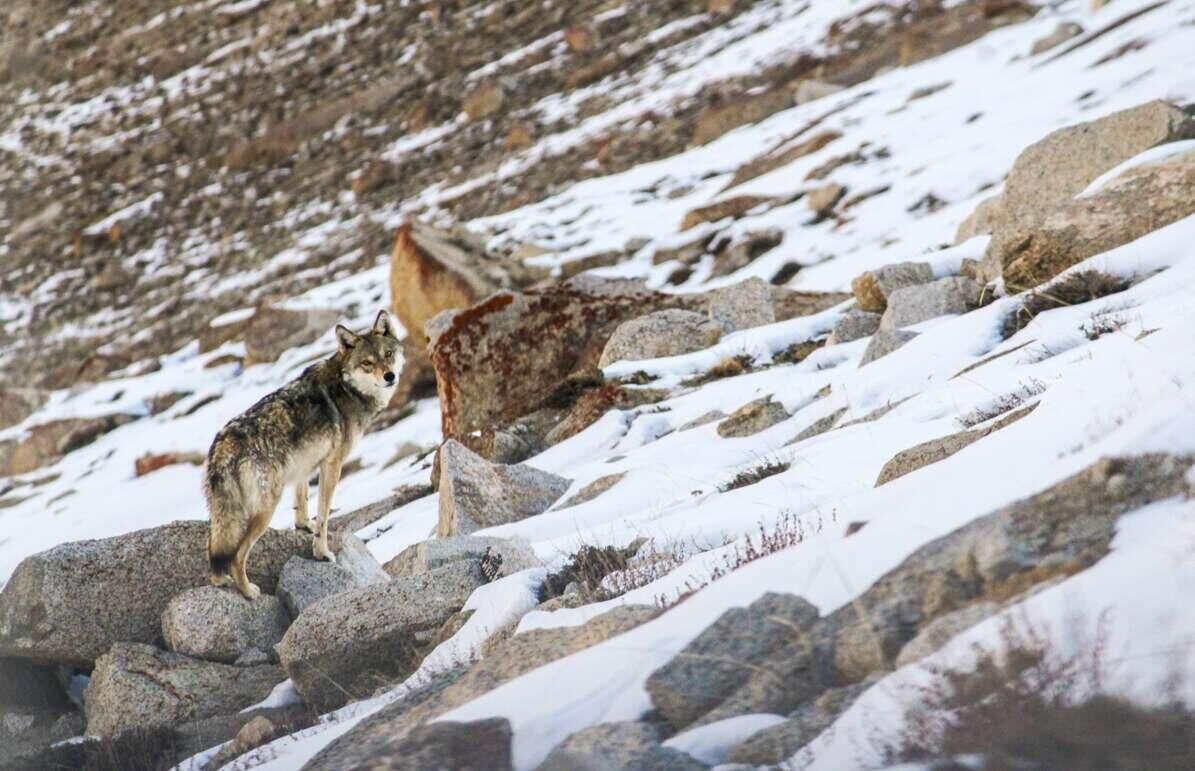
After five years, if their community insurance programme has a sizable corpus, the village runs the scheme independently. If in a given year, the village suffers a high mortality of horses due to sickness or loss to predators in the wild, the NCF steps in for monetary support on occasions.
“After we ran this insurance scheme successfully for five years in Gya, we started a similar version of it in Hemya and Miru. In Hemya, residents chose Yak as their choice of animal on which they would run their community-based insurance scheme. The premium on Yak was kept at Rs 50 per month, and total compensation in the event of a loss was set at Rs 8,000 per Yak, by the village committee itself,” he says.
In villages like Samad Rupshow in the Changthang region, their committee has set a monthly premium of Rs 200 per horse per month and a total compensation in the event of a loss at Rs 15,000 per horse. But if mortality rates are high, the committee can decide to lessen the premium amounts each resident has to pay. Today, the scheme runs independently in Gya, while it’s in motion across other villages like Miru, Kungyam, Hemya and Rupsho.

Faith For Conservation
Another key element of NCF’s community-based conservation effort is converting Shangdongs to stupas to provide escape routes for trapped animals. The process begins with consulting the goba (village headman), village youth groups, women’s groups, representatives of the herding community and government officials.
“The first construction of a stupa near a Shangdong was initiated in the Chushul village of Ladakh in 2018. Here, we dismantled four shangdongs and constructed one stupa. A Shangdong is dismantled by removing just a few stones from the structure, which creates an escape route for any trapped animals. In doing this, the original architectural structure is preserved, honoring the tradition of these pastoral communities. Building a stupa near the dismantled Shangdong integrates Buddhist principles of compassion toward all living beings. The message is to strengthen the traditional link between culture, livelihood, and conservation,” writes Karma Sonam in a June 2020 column for the Snow Leopard Trust.
A religious ceremony follows this construction, wherein the stupa is consecrated by the Rinpoche (an honorific given to spiritual masters held in high regard by Tibetan Buddhists). In 2019, a similar initiative was organised near his hamlet of Rumste, which included one of the Shangdongs where he stoned a trapped wolf as a child.

“His Eminence Rangdol Nyima Rinpoche and His Eminence Drukpa Thuksey Rinpoche suggested that we build a Changchup Chorten, which symbolises the Buddha’s enlightenment, near the dismantled Shangdongs. Leveraging their reputation and the principles of Buddhism helped us significantly in relaying the message of conservation to locals. We appealed to their religious sentiments to drive home the message of conservation. People in Chushul dismantled four Shangdongs and the residents of Gya-Miru dismantled two to construct and consecrate one Stupa each for a future of compassion and coexistence,” says Karma to The Better India.
NCF is currently conducting a survey of all Shangdongs in Ladakh and so far have found over a 100 of them. They have created a digital map locating where these structures are currently.
“As a child I committed a sin in stoning a wolf to death in a Shangdong but as an older man, I now have the opportunity to conserve these animals. In September 2021, we converted our third Shandong to a Stupa in Hemya village. Our objective is to neutralise all of them,” he adds.
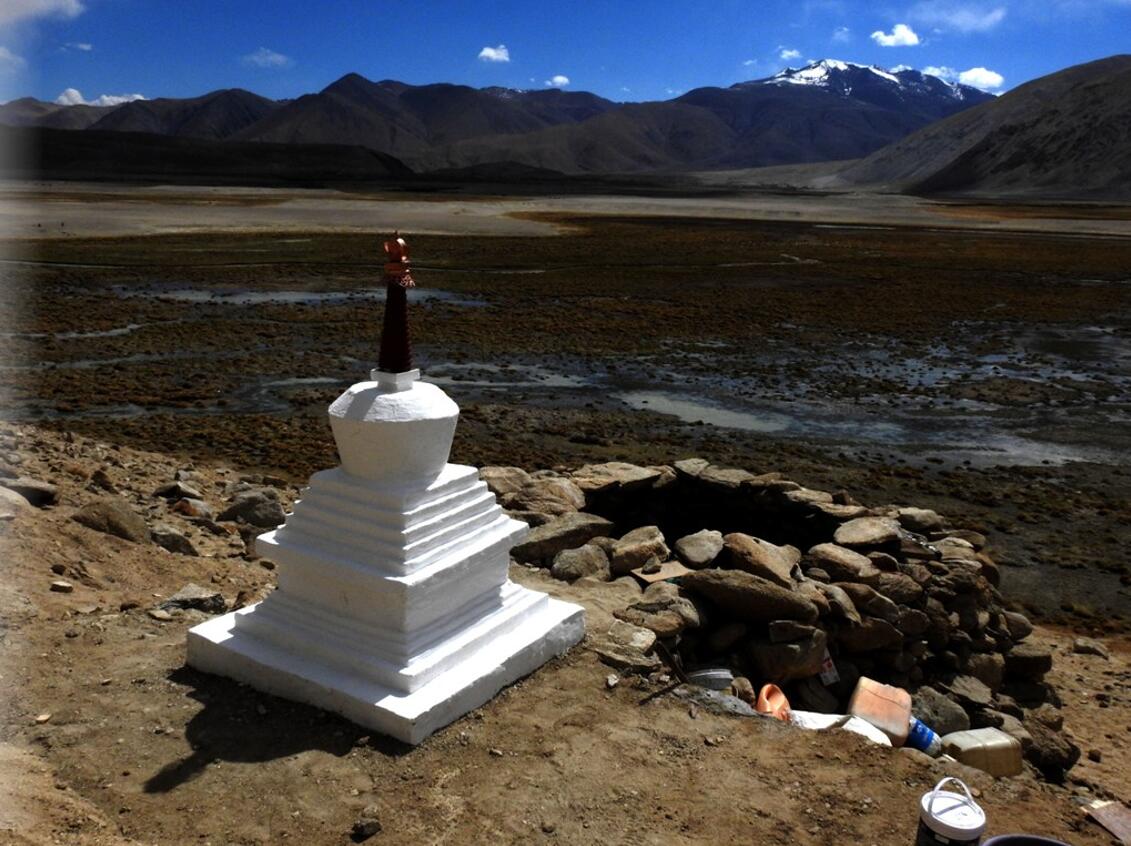
Grazing Free & The Future
Working with these communities, NCF has converted hundreds of hectares of community-owned range land into grazing-free reserves where herdsmen are not allowed to bring their livestock. After NCF holds discussions with the villagers, the latter nominates a committee of residents to oversee the implementation, following which an agreement is signed between both parties about the area free of livestock grazing and human use for five years.
In Changthang, when herdsmen over-graze the land with their livestock, the quality of pasture land declines. This becomes a problem for the wildlife dependent on the flora, and the predators, whose survival is incumbent on ensuring they are fed well. The NCF started this in Ladakh in 2007 near Hanle, where there was a small population of the Tibetan Gazelle.
“Their habitat saw increasing amounts of overgrazing. In close consultation with local herders, we ask them not to take their livestock to graze there for five years and offer them incentives to follow through. After five years lapse, we extend that period, depending on the agreement reached with the herder community. Of course, it was not easy to convince them to let go of grazing land for five years or more. In Hanle, for example, we would send Rs 50,000 annually into their community account to buy fodder for the first few years. Similarly, for the herder community in Gya, who complained of a lack of lighting in their Rebos (nomadic tents), we set up solar lighting for them. Every community has their own needs, and to ensure they don’t graze on a particular parcel of land, we fulfill whatever they desire in exchange,” explains Karma.

His approach works because NCF has been regularly meeting with these communities since 2006. After starting with Hanle, the NCF team proceeded to Gya, Miru, Hemya and Chushul as well. So far, they have created five grazing-free reserves. Meanwhile, they have also built about 65 predator-proof corrals in the Rong Valley, Gya-Miru and Changthang areas, besides running conservation education programs in government and private schools for school children with the help of the Himalayan Nature Club and its members for the past 15 years.
“Only those who possess a deep and abiding love for nature can continue to work relentlessly like he has, given how challenging conservation work is on the ground. We have worked together for many years and I know the kind of difficulties and obstacles he has faced. It’s unfortunate that not enough people know about the amazing work he has done,” says Khenrab.
For Karma, however, it’s pretty basic. “Our aim is that the community’s livelihood should stay sustainable and that humans and wildlife should co-exist,” he says.
(Edited by Yoshita Rao)
Like this story? Or have something to share? Write to us: [email protected], or connect with us on Facebook and Twitter.

Similar Story
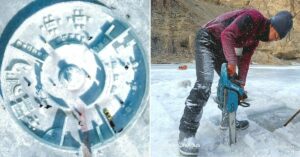
A Cafe, A Snow Leopard & More: Inside Ladakh’s Unique Ice Sculpture Exhibition
Earlier this year, the Kangsing Snow and Ice Sculpture Association organised the Ladakh Snow and Ice Sculpture Workshop 2022 in Chilling valley, along the frozen Zanskar River–a ‘first of its kind’ workshop in India.
Read more >
If you found our stories insightful, informative, or even just enjoyable, we invite you to consider making a voluntary payment to support the work we do at The Better India. Your contribution helps us continue producing quality content that educates, inspires, and drives positive change.
Choose one of the payment options below for your contribution-
By paying for the stories you value, you directly contribute to sustaining our efforts focused on making a difference in the world. Together, let's ensure that impactful stories continue to be told and shared, enriching lives and communities alike.
Thank you for your support. Here are some frequently asked questions you might find helpful to know why you are contributing?


This story made me
-
97
-
121
-
89
-
167












